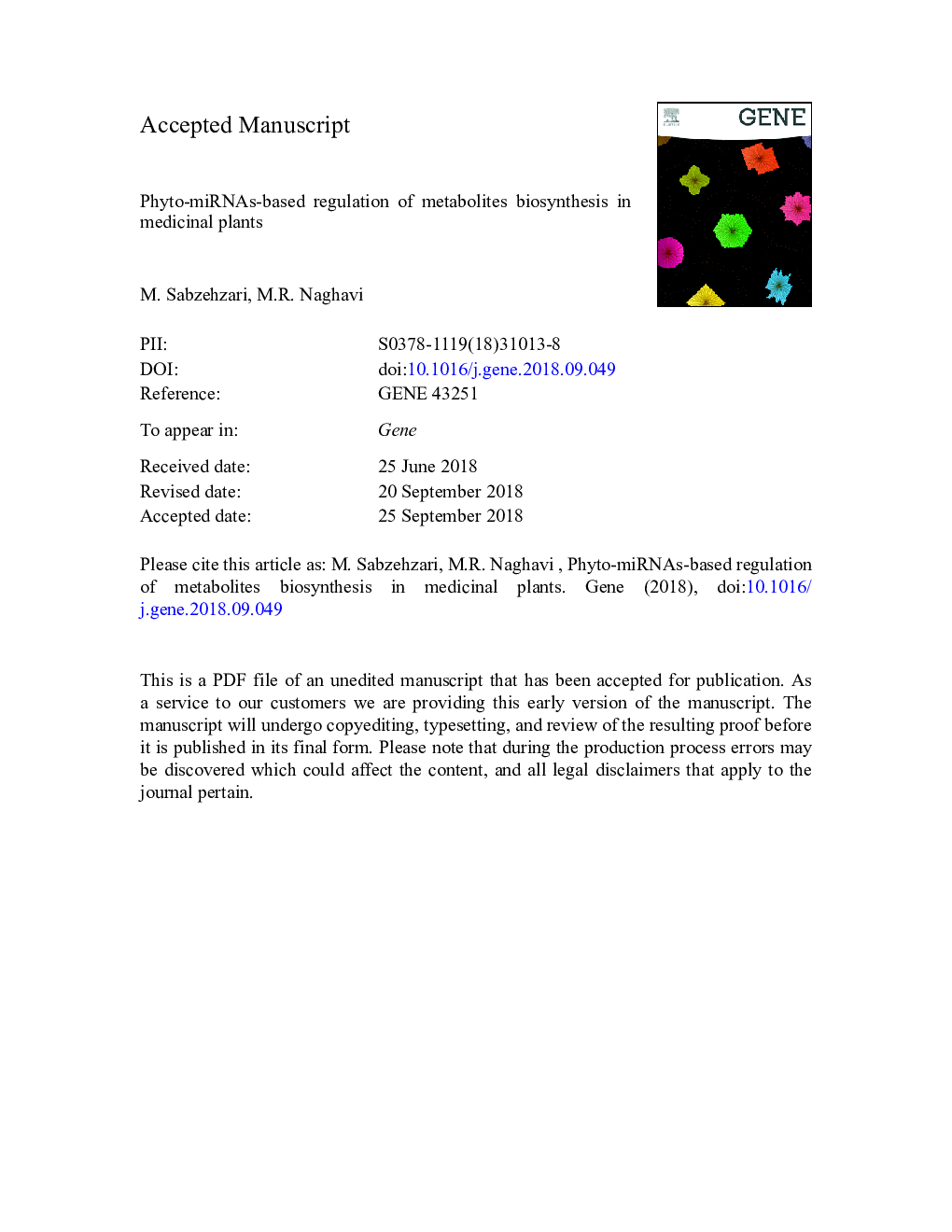| Article ID | Journal | Published Year | Pages | File Type |
|---|---|---|---|---|
| 11015205 | Gene | 2019 | 39 Pages |
Abstract
Medicinal plants, are known to produce a wide range of plant secondary metabolites (PSMs) applied as insecticides, drugs, dyes and toxins in agriculture, medicine, industry and bio-warfare plus bio-terrorism, respectively. However, production of PSMs is usually in small quantities, so we need to find novel ways to increase both quantity and quality of them. Fortunately, biotechnology suggests several options through which secondary metabolism in plants can be engineered in innovative ways to: 1) over-produce the useful metabolites, 2) down-produce the toxic metabolites, 3) produce the new metabolites. Among the ways, RNA interference (RNAi) technology which involves gene-specific regulation by small non-coding RNAs (sncRNAs) have been recently emerged as a promising tool for plant biotechnologist, not only to decipher the function of plant genes, but also for development of the plants with improved and novel traits through manipulation of both desirable and undesirable genes. Among sncRNAs, miRNAs have been recorded various regulatory roles in plants such as development, signal transduction, response to environmental stresses, metabolism. Certainly, the use of miRNAs in metabolic engineering requires identification of miRNAs involved in metabolites biosynthesis, understanding of the biosynthetic pathways, as well as the identification of key points of the pathways in which the miRNAs have their own effect. Thus, we firstly consider these three issues on metabolic engineering of medicinal plants. Our review shows, application of miRNAs can open a novel perspective to metabolic engineering of medicinal plants.
Keywords
FpsTIAsshort interfering RNAsQPTHD-ZIPsncRNAsprecursor miRNAsMREPGMPSMSPHATRPEsiRNAsDArTmiRNAsAACTHMGRRNA interferenceRNAinon-coding RNAsAspartate aminotransferaseTerpenoid indole alkaloidsBenzylisoquinoline alkaloidssqualene epoxidasePSOmicroRNAsBiasfarnesyl diphosphate synthasephosphoglycerate mutasePlant secondary metabolitesMetabolic engineeringpre-miRNAsMedicinal plants
Related Topics
Life Sciences
Biochemistry, Genetics and Molecular Biology
Genetics
Authors
M. Sabzehzari, M.R. Naghavi,
